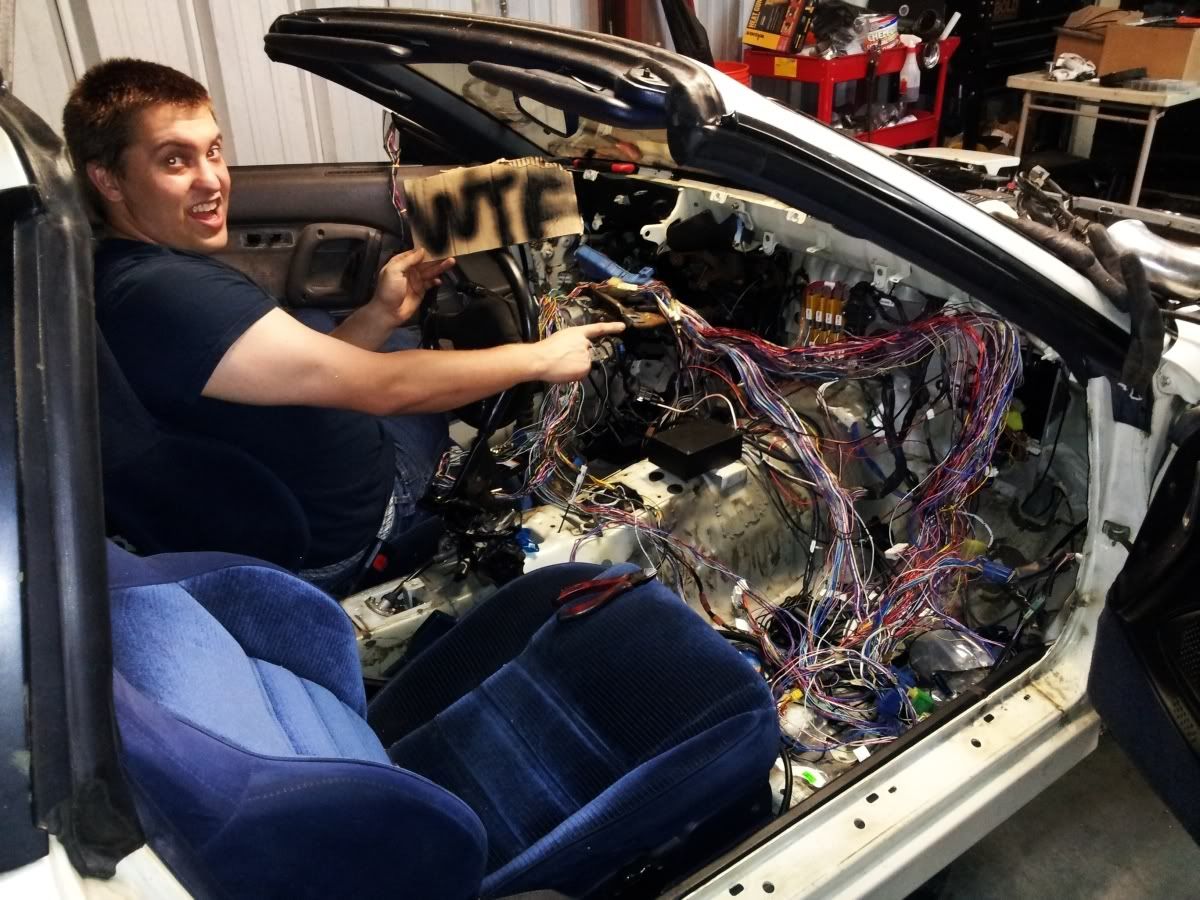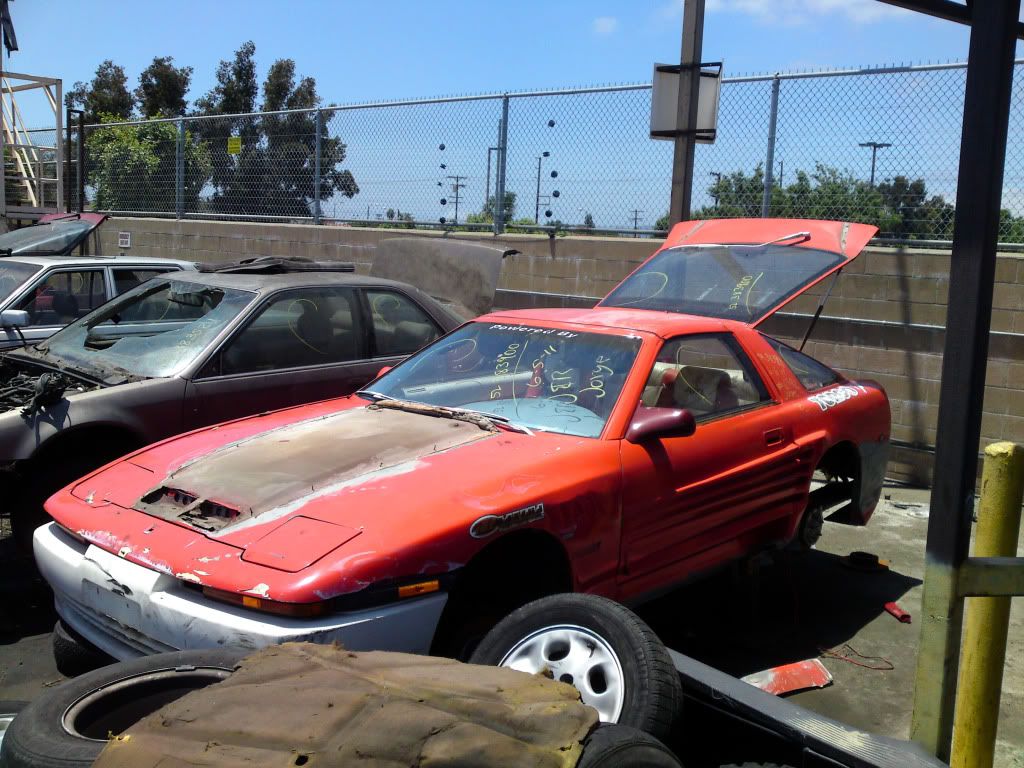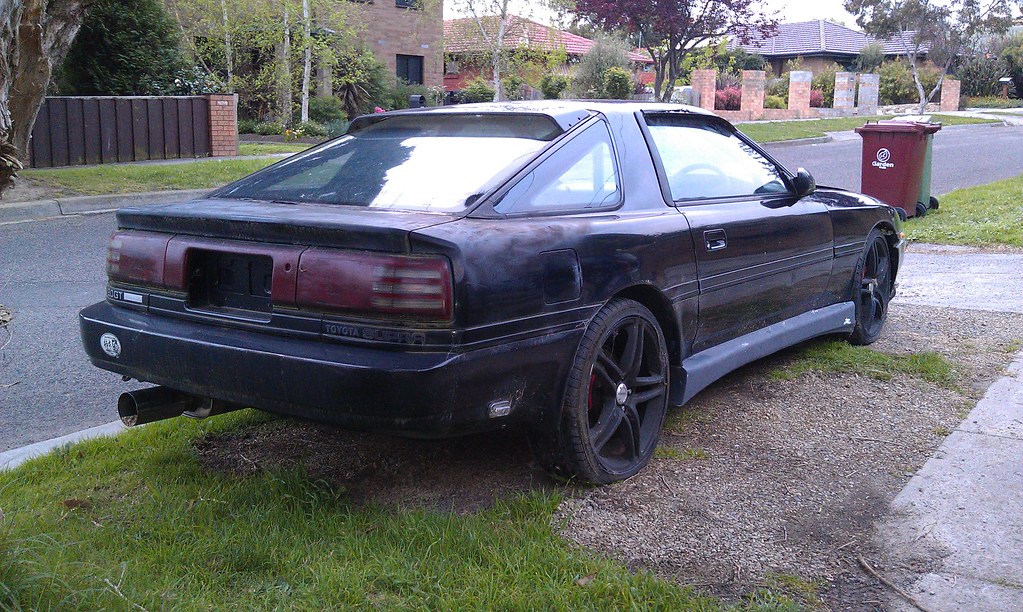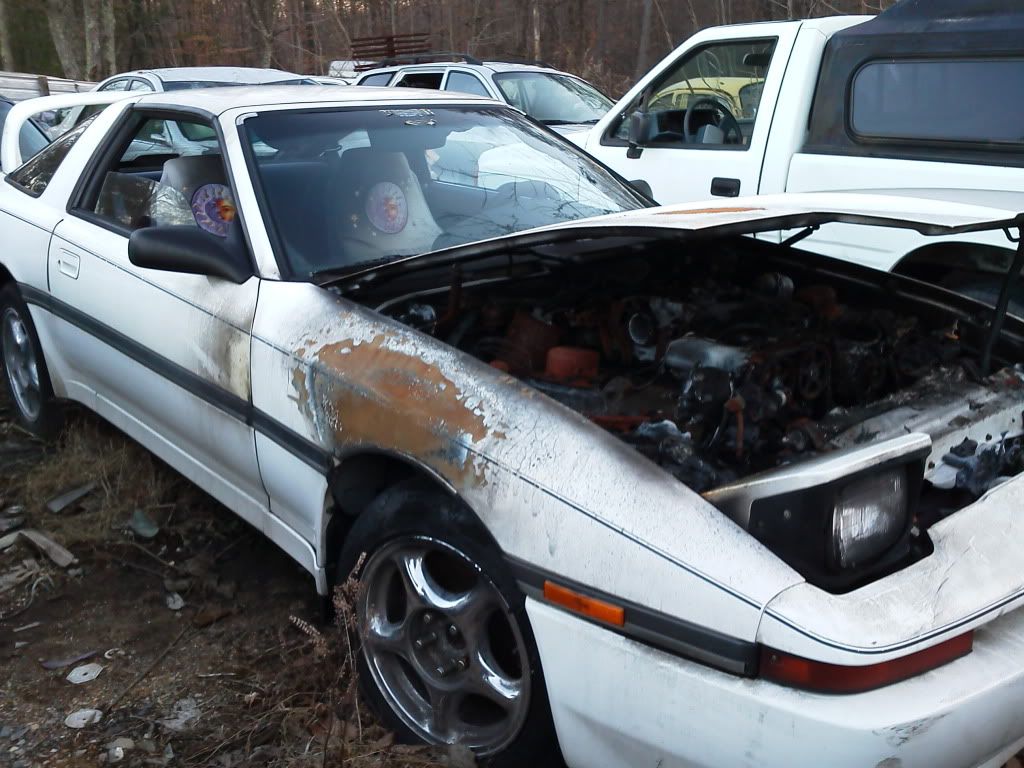When most people think of iconic Nissan cars, the two that standout are the GT-R and Fairlady Z. But of all the chassis that Nissan has produced, none other has left a bigger mark on the tuning industry as the S-chassis, the cars you know better as either the S13, S14 or S15. From drag racing, time attack and most of all, drifting, the S-chassis has done it all and with great success. Iconic shops in Japan and the US have found fame in just building up this single platform.
History of the S-Chassis
The first Nissan to be named Silvia debuted in 1964. But it wasn't until 1974 that the first actual vehicle with an S designation was released, the S10. And when the S13 Silvia was released, all hell broke loose. The car was a success both domestically in Japan and on a global scale. The first introduction of the SR20DET engine gave tuners something to rally around. At the time, neither the Lancer Evolution nor the Impreza STI were released yet. Honda was offering the EF8 CR-X, EF9 Civic SiR and DA Integra, but those cars only came with naturally-aspirated engines. Toyota had already cut out the AE86 Corolla and turned its predecessor into a FF pansy. The only real tuning platforms were the Mazda FC3S RX-7, Toyota MA70 Supra and the Nissan Z32 Fairlady Z. At the same time, the Japanese asset price bubble finally popped and enthusiasts had to look for a more cost effective platform. Tuning companies went straight to work on building parts for the Silvia. The S13 hatchback sold so well in Japan, that Nissan continued to sell the 180SX hatchback concurrently with the S14 chassis through to 1998.
Near the end of 1994, Nissan released the next generation, the S14 chassis. The base chassis and powertrain being the same, Japanese tuning shops continued developing parts. Around this time heavy development in ROM tuning took place. Once the coding for the ECU was cracked, a whole new world of tuning opened up. Now more reliable power could be harnessed without the use of piggyback controllers. Tuners could remap ECUs for larger capacity airflow sensors and injectors without sacrificing drivability and the need to buy additional fuel controllers. This same methodology of tuning continued onto the final release in 1999 of the S-chassis line, the S15 Silvia.
When the initial planning for the S13 240SX (US version of the Silvia and 180SX) was mapped out, a turbocharged engine was opted out. Instead, Nissan decided to implement an engine that was used in their trucks as its powerplant. While there were two turbocharged engine options being sold in Japan (SR20DET and CA18DET), the US would be doomed to its fate of coming equipped with only a naturally-aspirated single cam engine, the KA24E. In 1991, after 2 years of sales, the KA24E would be replaced by a dual-overhead cam version, the KA24DE. Although sales were strong for the S13 in the US, it just didn't have the same impact as it did in Japan. The lack of power had the majority of enthusiasts turning to Hondas as a result. This trend of lackluster sales would continue over to S14. When the time came to release the S15, strict emissions standards and a poor performing management kept it from ever seeing a US debut.
It wasn't until the rise of the popularity of drifting in the early part of 2000s that people started buying up every S-chassis in sight. This suddenly breathed new life into the S-chassis in the US, much to the dismay of all the underground drifters and OG 240SX enthusiasts. What was once a car relegated as a ghetto ride, started to eclipse the almighty Civic in popularity. Drifting became the new motorsport of choice, replacing the wonder years of import drag racing. A new niche in the industry sprung up and manufacturers saw a new demand for parts they never dreamt of keeping in stock.
| 240SX Sales |
| YEAR | CARS SOLD IN THE US |
| 1989 | 68118 |
| 1990 | 60582 |
| 1991 | 34534 |
| 1992 | 27033 |
| 1993 | 21471 |
| 1994 | 1167 |
| 1995 | 25114 |
| 1996 | 7334 |
| 1997 | 3655 |
| 1998 | 2178 |
| VEHICLE PRICING IN 2001 |
| VEHICLE | LAYOUT | ESTIMATED POWER | PRICE |
| DC2 Integra Type-R | FF | 210ps | 2,576,000JPY |
| S15 Silvia Spec R | FR | 250ps | 2,290,000JPY |
| FD3S RX-7 Type RB | FR | 255ps | 2,948,000JPY |
| GDB Impreza STI Type RA | AWD | 260PS | 2,968,000JPY |
| CT9A Lancer Evo VII GSR | AWD | 280PS | 2,998,000JPY |
The success of the Silvia is largely attributed to price per power. Though the Japanese automakers blundered this when they brought the cars to the US, they nailed it in Japan. The car's pricing positioned it lower than their competitors but had the power potential to surpass any of the competition on the track at any time. This coupled with tremendous aftermarket support, not only from the Japanese tuning industry but also from their corporate motorsports division, NISMO. Cross-compatibility throughout the years refined tuning parts as time went on. As the popularity of the S-chassis began to skyrocket, an encyclopedia of parts was already available.
The S-Chassis in Motorsports
The FR layout of the S15 made it incredibly suitable for motorsports. Nissan utilized the chassis for a number of years in the JGTC GT300 class. Following suit, enthusiasts have pushed the limits with the chassis in all forms of racing. The S-chassis can be found on the dragstrip as well as on the circuit. Every year at the Tsukuba Circuit gathering, tuners come out to determine who has the bragging rights of having the fastest Silvia at RevSpeed's Super Lap Battle. There are always a couple teams that show up campaigning some sort of S-chassis, clicking off sub-minute lap times (that means really, really fast). Closer to home and on a more extreme level, Mazworx's drag S15 can be found clicking off 9-second passes on the dragstrip.
Aftermarket support for the S-chassis continues to shine to this day. There are more aftermarket suspension components for this car than any other car on the market. Support doesn't just stop there either. Motor mount kits are available to fit in engines like the RB26DETT (inline 6-cyl Skyline engine), the VQ35 (V6 350Z), the VH45 (V8 Infiniti Q45) and the LS1 (V8 Corvette).
In no other type of motorsport has the S-chassis reined supreme than drifting. This platform has successfully scored more wins (26) and more championships (5 out of 9) in D1. At the beginning of the 2010 season, there were 15 S-chassis entries in D1GP and 12 in Formula D. Even more convincing is that many drivers trace their roots back to S-chassis. The argument can be made about the AE86 Corolla, but the results speak for themselves. Ken Gushi, Ryan Tuerck, Chris Forsberg, Dai Yoshihara, Vaughn Gittin Jr. and Robbie Nishida have at one time or another been behind the wheel of a S-chassis.
Of the S-chassis based drift cars, no other has been more successful than the Auto Produce BOSS built S15. Originally piloted by Yasuyuki Kazama to a championship in 2005 and to a second championship by Youichi Imamura in 2009, this same car has racked up 11 first place finishes. Although it has gone through different combinations of engine setups and aerodynamics, this S15 has proven to be one solid performer. The man behind the development of this car, Auto Produce BOSS president Kazuhiro Fujioka, said, "The real advantage of the Silvia is its compact chassis design, extensive availability of parts and the driving position make it the ultimate drifting machine."
Of all the tuning shops in the world, none other is synonymous with the S-chassis than Yashio Factory. Led by Kazuyoshi Okamura, affectionately known as Oka-chan, he has built and raced S-chassis to legendary status. He says, "Besides the fact that it is one of the very few FR platforms in Japan, it has an amazing amount of potential. Tuning changes are easy to make and deliver results that can be directly felt behind the wheel. The further you push the limits of the car, the further it performs. It's a car you can take from 1'12.00'' at Tsukuba Circuit and transform it to click off a 57.70''."
One driver who needs no introduction is Nobiteru "NOB" Taniguchi, the infamous drifter and racecar driver who has long been a fan of the S-chassis. This man has been behind of the wheel of almost every modern sports car and numerous racecars. His love of the S-chassis goes beyond the track, which he also won a D1 Championship with. He owns an S13, 14 and 15 as daily drivers. When asked why he chose the Silvia out of any car he could own, he said, "I love the car for the pure enjoyment I get out of driving it. I've owned my Silvia for a long time and I never get sick of it."
S-Chassis Styling
The current "Hella Flush" madness can be partly attributed to the S-chassis. Along with the AE86, the S13 helped to popularize lower offsets, wider wheels and stretched tires on Japanese cars. Along with that came aggressively low body kits, over fenders and incredibly low stance. When styling got too pretty and out of hand, the trendsetters turned everything around, making zip ties, primer and broken fiberglass look good. No matter how old the S-chassis gets, they are continuously evolving style-wise, making them as cool or cooler than than any new car.
-
-

NOB's love for the Silvia runs through all its generations
The Future of the S Car?
No other car has been modified for so many decades more than the S-chassis. Not just popular in the US and Japan, the cars have been widely accepted in every continent of the world for all types of racing. Parts are still being developed today, making the S-chassis competitive with modern day performance cars. Unfortunately, in 2002, Nissan stopped the production of the S15 and has since ended the Silvia line. Although there were rumors of an S16 project, Nissan has since said they have scrapped the project. We can only hope that one day they will bring back a line of affordable and tuner friendly FR cars.
S-Chassis Vocabulary
S13 - '89-94 240SX (US), '89-94 Silvia (Japan), '89-98 180SX (Japan)
S14 - '95-98 240SX (US), '95-98 Silvia (Japan)
S15 - '99-02 Silvia (Japan)
Silvia - Japanese S13, S14 and S15 coupe (not the S13 hatchback)
180SX - Japanese S13 hatchback
Zenki - Early models, pre-refresh ('89-90 S13, '95-96 S14)
Chuki - Middle models, after first refresh, if there's a second ('91-94 S13)
Kouki - Late model, last revision ('95-98 S13, '97-98 S14)
Strawberry Face - S15 front end; the Japanese word for 1 (ichi) and 5 (go) are similar to 'strawberry' in Japanese
Sileighty - An S13 Silvia front end (coupe) on an S13 180SX (hatchback)
Onevia - An S13 180SX front end (hatchback) on a S13 Silvia (coupe)
S13.4 - An S13 with a S14 front end
S13.5 - An S13 with a S15 front end
S14.5 - An S13 with a S15 front end
S14.3/S15.3/S15.4 - The LAMES. You never go with an older front end. Never!



























